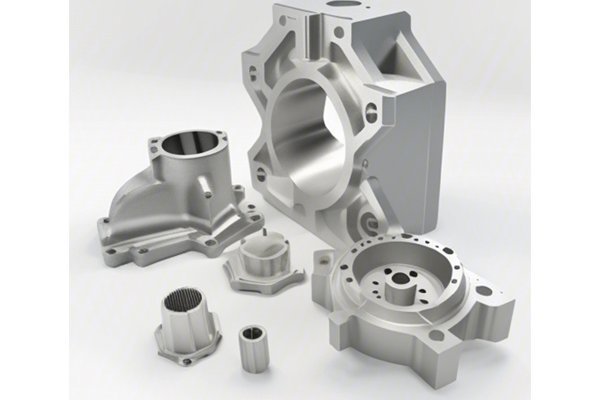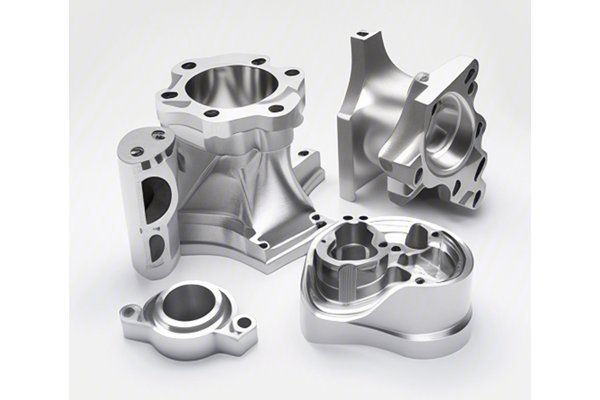: An Eye-Opening Statistic
Did you know that up to 50% of all errors in CNC machining related to dimensional tolerances can be traced back to thermal deformation issues? This surprising statistic underlines the critical importance of temperature control in CNC machining processes. As manufacturers enhance their capabilities to produce complex and high-precision components, the challenges posed by thermal effects become increasingly significant. But what causes these thermal deformations, and how can they be mitigated to ensure high-quality outcomes?
In this blog, we will explore the intricate relationship between temperature control and thermal deformation in CNC machining. We will delve into the underlying causes of thermal deformations, their impact on machining operations, and practical solutions to manage temperature effectively during machining processes.
Understanding Temperature Control in CNC Machining
CNC (Computer Numerical Control) machining is a precision manufacturing process that relies on programmed commands to control machinery. One of the most critical factors influencing the quality of CNC machined parts is temperature. From the cutting tools to the workpiece itself, temperature fluctuations can lead to deformations that compromise the integrity of the final product.
Thermal deformation occurs when the dimensions of materials change due to temperature variations. Each material has a specific thermal expansion coefficient, which dictates how much it expands or contracts when subjected to temperature changes. In CNC machining, several factors contribute to thermal deformation:
Thermal deformation can lead to several complications in CNC machining processes, including:
Understanding these impacts is crucial for the design and operation of effective machining systems.
Effective Temperature Control Solutions
To effectively manage thermal deformation in CNC machining, a combination of strategies can be employed. Below are detailed solutions that manufacturers can implement:
Flood Cooling: One of the most common methods to control temperature is the use of coolant fluids. Flood cooling involves delivering a steady stream of coolant onto the cutting area to absorb heat and reduce temperature effectively.
Minimum Quantity Lubrication (MQL): MQL employs very small amounts of lubricant applied directly at the tool and workpiece interface. This technique minimizes heat generation by reducing friction and is particularly effective for machining materials susceptible to thermal deformation.
Cryogenic Cooling: In some cases, using cryogenic fluids like liquid nitrogen can significantly lower the temperature during machining, thus limiting thermal impacts. Although more costly, cryogenic cooling can be advantageous for high-performance applications.
Material Choice: Selecting materials with low thermal expansion coefficients can mitigate thermal deformation. Advanced composites or specific alloys designed for thermal stability can be beneficial.
Cutting Tool Coatings: Employing cutting tools with thermal barrier coatings reduces the heat transfer to the tool, thus extending tool life and reducing thermal deformation on the machined part.
Tool Geometry Optimization: Adjusting the rake angle, clearance angle, and other geometrical features of cutting tools can enhance heat dissipation. This approach ensures that less heat is concentrated on the workpiece.

Controlled Feed Rates: Adjusting cutting speeds and feed rates carefully can balance productivity with heat generation. Slower rates may reduce thermal effects without compromising throughput significantly.
Adaptive Machining: Implementing adaptive machining techniques allows for real-time adjustments based on temperature sensors. By integrating feedback mechanisms, operators can optimize parameters to maintain ideal thermal conditions.
Controlling the ambient temperature of the machining environment is crucial. The following methods can help:
Temperature Regulation: Utilizing air conditioning systems or climate control within CNC machining environments can stabilize ambient temperatures, reducing thermal variations that impact machining precision.
Machine Monitoring Systems: Advanced sensors and monitoring systems can be employed to track temperatures in real-time. Alerts can notify operators of deviations that may lead to thermal deformation, allowing for immediate corrective actions.
Routine maintenance of both machines and tooling can prevent excessive accumulation of heat:
Tool Inspection: Regularly inspecting tools for wear and replacing them as needed ensures that they function optimally and generate minimal heat.
Machine Calibration: Ensuring that CNC machines remain calibrated and aligned can reduce unnecessary heat buildup through efficient material removal processes.
Training CNC operators to understand thermal effects can have a profound impact on managing machining conditions. Through awareness of the causes and consequences of thermal deformation, operators can make educated decisions that promote quality assurance during machining operations.
Real-World Applications and Case Studies
To illustrate the solutions mentioned above, let’s look at a couple of real-world applications that effectively implemented temperature control strategies to reduce thermal deformation:
Case Study 1: Aerospace Component Machining
A leading aerospace manufacturer faced challenges with dimensional tolerance issues during the production of titanium alloy components. High cutting speeds during milling operations led to significant thermal deformation, resulting in high rejection rates.
To address this, they implemented cryogenic cooling to maintain tool temperature and utilized flood cooling with advanced lubricants during the machining process. Furthermore, they optimized tool geometry, selecting specialized coatings to reduce heat transfer.
The result was a 40% reduction in tolerance-related rejections and a significant enhancement in overall component quality.
Case Study 2: Precision Medical Device Manufacturing
A medical device company relied on CNC machining for precision components with tight tolerances. They experienced thermal deformation issues that affected surface finishes.
The company adopted a comprehensive strategy that included controlling the ambient temperature in the machining environment, utilizing adaptive machining technologies, and implementing regular tool maintenance schedules.
As a result, they achieved both improved surface finishes and a reduction in machining cycle times by 25%.
: The Importance of Temperature Control in CNC Machining
As we have explored throughout this blog, temperature control is a pivotal aspect of CNC machining processes that can make or break operational success. Understanding the effects of thermal deformation and implementing effective strategies can lead to enhanced precision, improved surface quality, and minimization of waste.
In summary, the solutions discussed—from cooling and lubrication techniques to material selection and process optimizations—are essential considerations for any machining environment. By being proactive in managing temperature-induced issues, manufacturers can maintain competitive advantages in quality and efficiency.
Ultimately, the stakes are high: failing to address temperature control in CNC machining not only risks increased rejections and production costs but can also tarnish your reputation in an increasingly competitive market. Therefore, investing the time and resources to implement effective temperature control strategies is not just prudent; it is essential for success in modern manufacturing.
Adopt these practices, and you will find improved quality and consistency in your CNC machining operations—ensuring that your products remain at the forefront of the industry.






